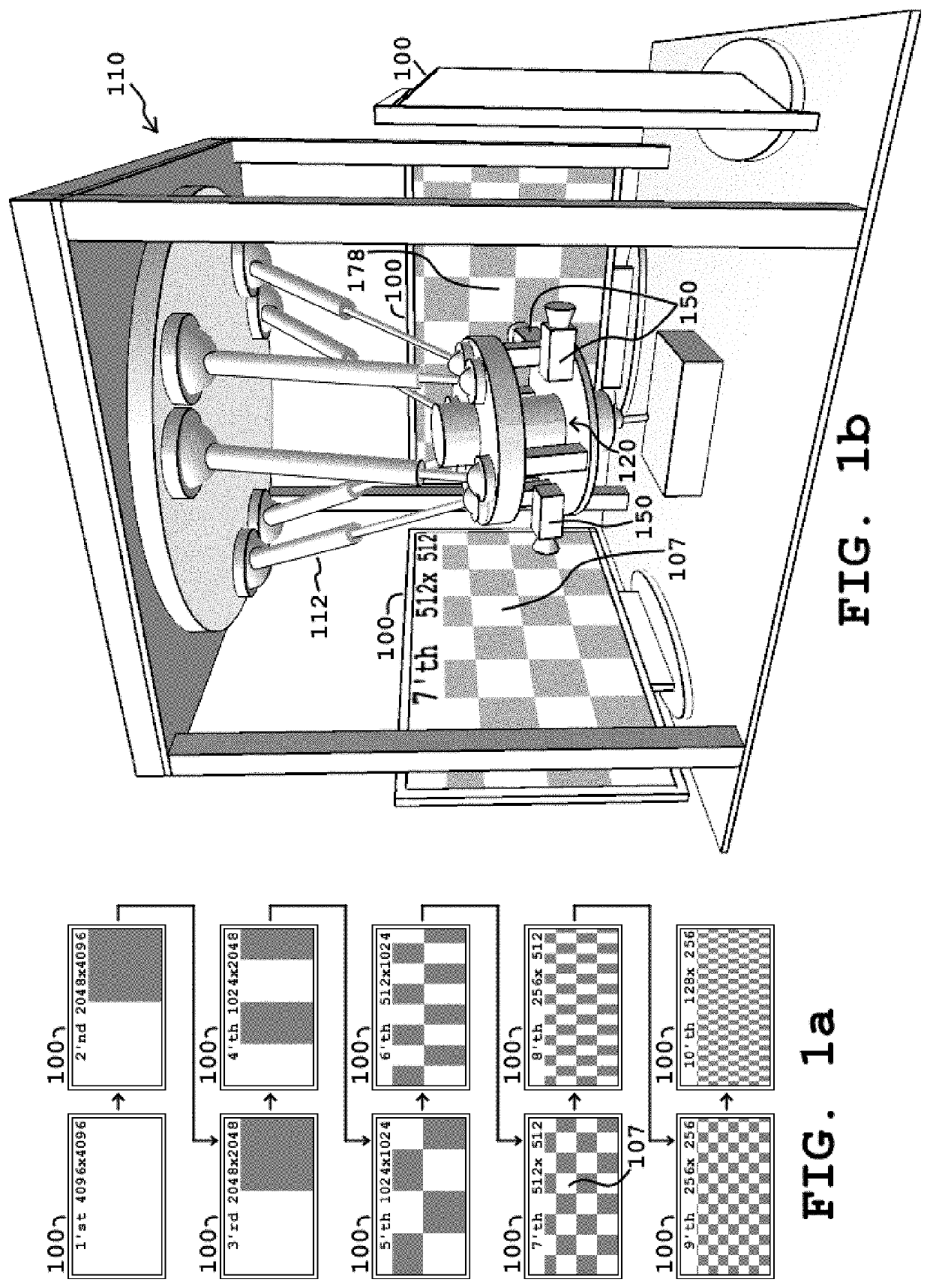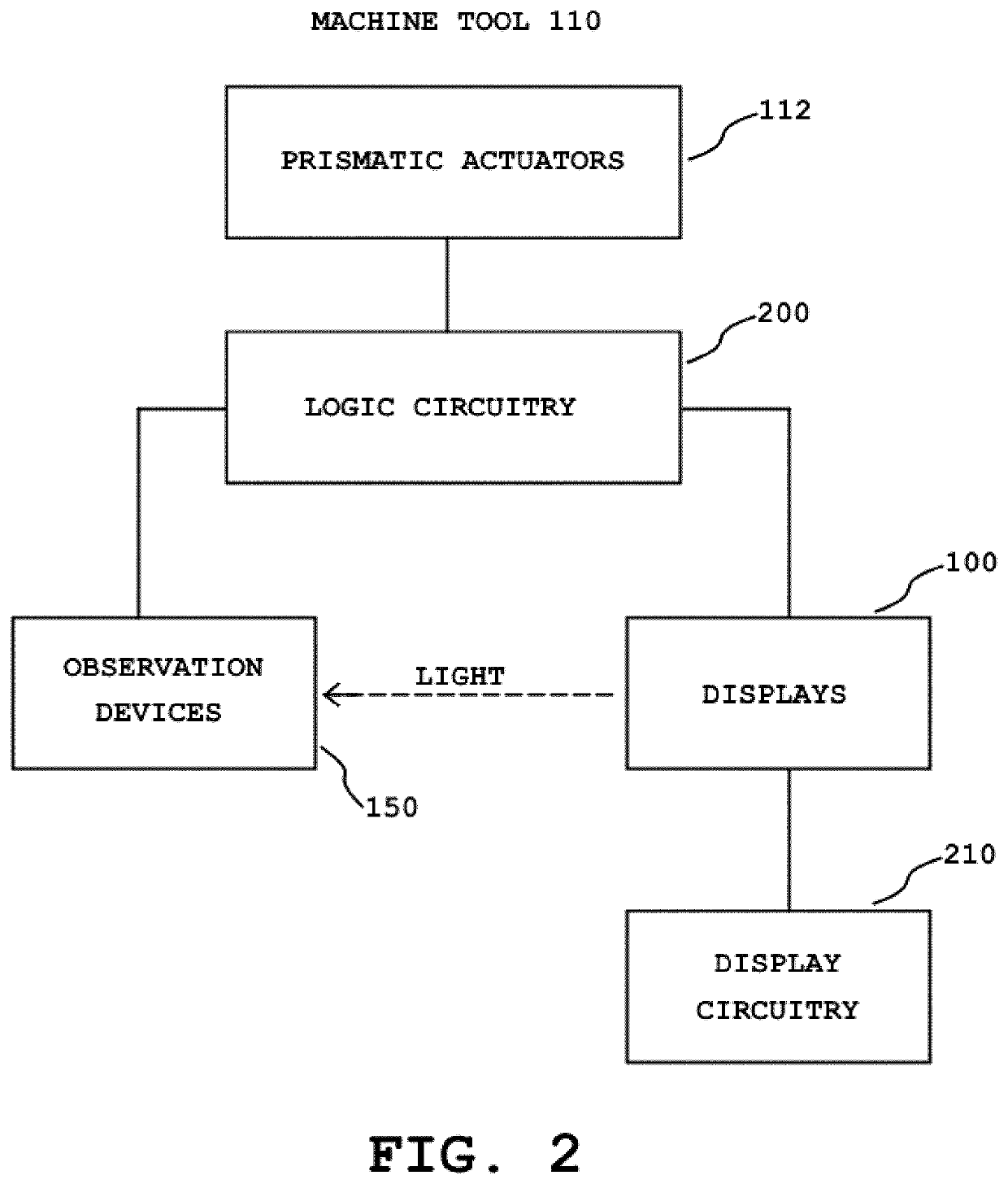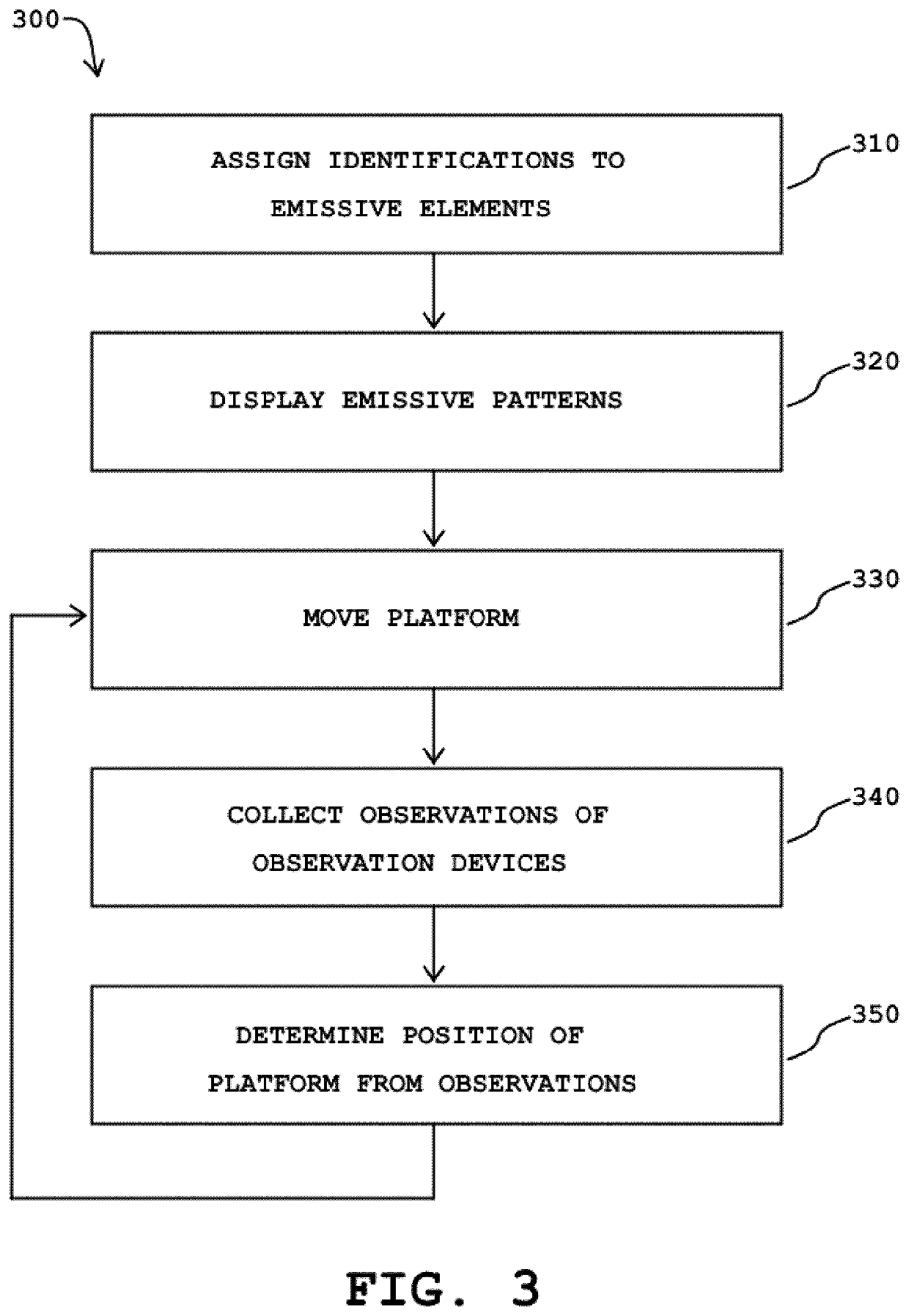Apparatus and methods utilizing emissive patterns to determine positional information
a position information and emissive pattern technology, applied in the field of apparatus and methods for determining position information, can solve the problems of backlash in the drive mechanism, deviations from the expected thread-to-thread location of screw-type drives and teeth, and more expensive linear encoders, so as to improve the accuracy and improve the accuracy of position information , the effect of superior positional resolution
- Summary
- Abstract
- Description
- Claims
- Application Information
AI Technical Summary
Benefits of technology
Problems solved by technology
Method used
Image
Examples
Embodiment Construction
[0036]The present invention will be described with reference to illustrative embodiments. For this reason, numerous modifications can be made to these embodiments and the results will still come within the scope of the invention. No limitations with respect to the specific embodiments described herein are intended or should be inferred.
[0037]The current invention uses one or more observation devices to mark distinguishable states of selected emissive entities as sequential control is expressed over a display such that after a fixed number of patterns have been expressed, the sequence of distinguishable states for every emissive element will have been unique. The identity of the emitters selected for observation is thereby known. Embodiments require the geometry of the observation devices to be known, and the positions of each of the emissive entities to be known relative to the other elements of the display, and the positional relationship between the observation devices and the dis...
PUM
 Login to View More
Login to View More Abstract
Description
Claims
Application Information
 Login to View More
Login to View More - R&D
- Intellectual Property
- Life Sciences
- Materials
- Tech Scout
- Unparalleled Data Quality
- Higher Quality Content
- 60% Fewer Hallucinations
Browse by: Latest US Patents, China's latest patents, Technical Efficacy Thesaurus, Application Domain, Technology Topic, Popular Technical Reports.
© 2025 PatSnap. All rights reserved.Legal|Privacy policy|Modern Slavery Act Transparency Statement|Sitemap|About US| Contact US: help@patsnap.com



